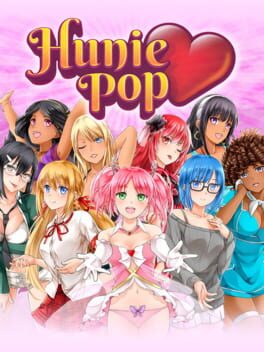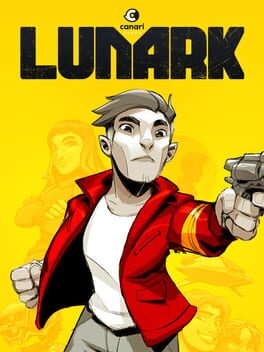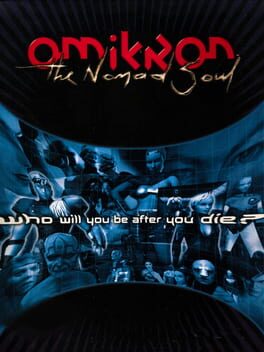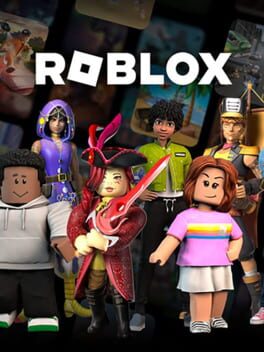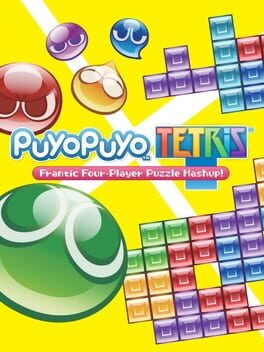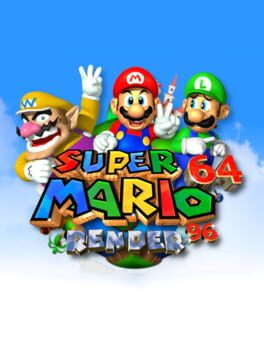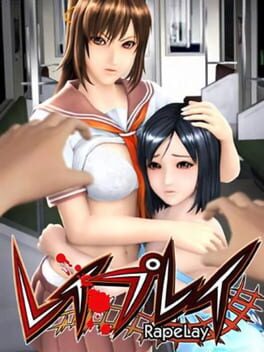dumbbaby
13 Reviews liked by dumbbaby
Having finished Grand Phantasm, it was onto the ninth game in the mainline Atelier series: the first of the two Mana Khemia games. This was another sub-series I knew basically nothing about as well. I knew it had something to do with an academy, and I knew it had some sort of time management system of some kind, but other than that it was as big a mystery as ever just what these games were. On top of that, it’s always a fascinating time starting a new Atelier sub-series, as there’s never any telling just how the gameplay systems and setting elements they’re using could’ve changed since the previous entry. But I was very surprised to discover during my time with Mana Khemia something about Grand Phantasm (the previous Atelier game). With the systems and design features that Mana Khemia has, Grand Phantasm is shown to be much less the third Atelier Iris game and more like a retroactive Mana Khemia 0. I did just about every character quest and unlocked nearly every item I possibly could, and it took me about 61 hours to beat the Japanese version of the game on real hardware.
Mana Khemia is first and foremost the story of Vein, a young man with few memories who lives with his cat in the woods with very little human contact. Everything changes for him when a professor Zepple finds him and recruits him as a new student to their university of alchemy: Al-Revis. The story then follows Vein’s journey from his start of school through to his graduation after three years studying there, over which time he makes many new and exciting friends at the atelier he’s press-ganged into almost immediately upon leaving the entrance ceremony. As far as anime-ish fantasy sorts of stories about one’s time at a high school, this will likely not blow away anyone very familiar with the genre, but I for the most part really enjoyed my time with it~.
After Grand Phantasm was such an almost great story, I honestly didn’t have much better hope for Mana Khemia. As such, I was very pleasantly surprised by just how much I ended up enjoying Mana Khemia’s story. It all made a lot more sense when I actually looked up the person who wrote the game (as well as its sequel) and discovered that it’s not only the same guy who wrote a lot of the quests (the best written parts) of Grand Phantasm, but he’s also the same guy who would go on to write what I consider to be easily the best written Atelier games, Atelier Rorona and Atelier Totori. Mana Khemia is a very well written story about growing up and discovering who you are and who you want to be, but it’s also a story of finding acceptance in a new and unfamiliar space. It’s a story about how you’re never nearly as alone as you feel as long as you have a community around you who can help pick you back up when you’re down, and it was just as effecting a story as I’ve come to expect from this writer (and while it doesn’t quite top Atelier Totori, it comes damn close for me). I personally went with Nike’s ending (“Nikki” in English), and while I’ve heard very mixed things about the English translation of this game, I enjoyed all the characters and their character stories very much (save for Muppy who is awful and I wish wasn’t in the game XP) and almost hated to see the story end with just how much fun I was having.
As far as gameplay systems go, Mana Khemia does a very clever job of ironing out the biggest design issues in Grand Phantasm very well. Where Grand Phantasm had its story quests and big Story Events TM that’d get activated after doing enough of them, Mana Khemia has semesters (of sorts) where there are electives (I have no idea what they translate /kadai/ as) you can do during them. These electives either introduce new mechanics, or are just general tests of ability and resourcefulness at a particular task, and they even have some story or lore tidbits tucked into them as well quite often too. Depending on how well you do on these two to four electives per semester, you’ll get merits that fill up a bar on how many merits you need to complete that semester. Once you’ve filled up that bar to the required amount, you can use the rest of the semester for “free time” that you can do part time jobs (quests, and as many as you want!) or a character quest if you want to.
During technically any time (free time or elective time) you can go and explore dungeons to your heart’s content and time will never pass into the next week, as such. Instead, time moves forward upon either completing that week’s chosen elective or after you’ve completed a character quest for someone. The character quests are entirely optional (all seven characters have 5, save for Muppy who has 4, with only one person’s final quest doable per playthrough, though you thankfully have more than enough time to do everyone’s non-final quests in one playthrough as I did), and you can even just go back to your dorm to sleep through free time if you want, but the overall construction of the character quests and electives make for a far better paced experience than Grand Phantasm’s guild system ever did.
It’s not time management as the Atelier Arland games or the original five Atelier games do it, sure, but the opportunity cost of which electives to do, how hard to work at them, and which character quests to pick and when also made for a more engaging experience despite ultimately having enough time to do everything and then some. It also helps that the character quests as well as the big Event Quests at the end of each semester tie into the main themes and narrative better than Grand Phantasm’s ever did, but it was very nice to see such a promising yet flawed system get the refining it clearly deserved, not to mention refining to such great effect.
For the battle system, we have something very straightforwardly an evolution on Grand Phantasm’s systems, and also a significantly more challenging one as well. While this isn’t quite something to the level of SMT, this is easily the most difficult Atelier game they’d ever made at this point in the series, particularly at the start when you don’t quite have all your tools available to you yet. Carried over from Grand Phantasm, we have a party of three facing off against enemies with a turn counter at the top of the screen that you’re encouraged to manipulate to your advantage as best you can. You also still have the burst gauge you can activate for when you want your biggest, meanest damage to be dealt. However, there are some very significant changes introduced since Grand Phantasm that make an already fun and snappy battle system even more fun to play with.
Now our party size is eight, and up to six of them can be in battle at a time with three active and three in support. Swapping in different characters as either defending or attacking supports gives battle a really great feeling of momentum, especially once you unlock more advanced supports later on. We’ve also ditched the party-wide MP pool for a character-by-character MP pool, and one of the things that makes the early game so difficult is that the main time you mostly recharge your MP while you’re in the support pool during battle, so you’re a bit MP-poor for the first few chapters of the game. Even still, having six characters to choose from per battle instead of the weird job system Grand Phantasm had makes Mana Khemia’s battle system way more fun and engaging, and that’s also got this game’s leveling system to thank for it as well.
The leveling system that’s here really isn’t a leveling system at all, as such. Taking and, in my opinion, enhancing another idea from Final Fantasy X, Mana Khemia instead as a sort of sphere grid via its Grow Book system. Each character has their own personal grow book (not one giant grid like the sphere grid), and each time you make a new alchemy recipe for the first time, there’s an almost guaranteed chance that somewhere on some character’s grid, you’ve just unlocked a new node. Each node has one to three sub-nodes on it, and unlocking these sub-nodes can give you anything from permanent stat buffs to new passives to even new spells/abilities to use in battle. How you unlock sub-nodes is by spending AP that you earn from doing battles, and earning AP (as well as unique crafting ingredients as well) is the main reason to do battles, not earning EXP (as that doesn’t exist). It’s a bit annoying that sometimes you’ll just be really stuck in someone’s (or everyone’s) tree because there’s some recipe you just haven’t been able to make yet or haven’t found at all yet, but it’s nevertheless a very fun and cool system that takes the idea of “making something for the first time!” and blending it with the rest of the gameplay in a very clever way.
The alchemy itself is still somewhat similar to Grand Phantasm, but it’s taken a good few steps forward towards being like alchemy used to be in the first five games (and would very soon be again just two games later). Items once again have universal similarity amongst one another (you make a +magic hat and then the same hat again with +defense, now ALL instances of that hat are +defense), but now items have quality levels again. These aren’t decided by a random chance upon pickup like how other games did/would do it (again, all instances of an item are identical). Instead, what items you use to craft something (higher numbers give higher numbers) as well as a little timing mini-game as you craft things determine the quality level. Generally higher is always better, but if you’re aiming for specific qualities to put onto something you’ll then make into armor or weapons (crafting bits which don’t have that mini-game alongside them), you might occasionally be aiming for a more middling or even “low quality” item to get a specific quality. I’m not a huge fan of the timing mini-game, myself, but the overall change to the alchemy system is definitely a step in the right direction for making the whole thing more engaging than it used to be.
The only real negative about the design other than the occasional annoyance of the grow book being a tree you can get stuck on is in how they’ve changed exploration. No longer do you get kicked out of sub-worlds that you go to after a certain amount of time. The sub-worlds are even almost entirely connected amongst each other in case you want to go between them that way (not that you generally would), and instead time passing in levels just makes it go from day to night. Now, not much actually changes as night (save for the very seldom crating ingredient only available at night) other than monsters getting harder. Far FAR harder. I’m talking like 1.5 to 2 times multipliers on their stats. It makes it feel like you may as well just get kicked out at night time, because monsters are SO much more horrifying at night (not to mention faster on the over world so they’re much harder to dodge) that you may as well just go home at that point anyhow. What’s even still is that there’s no penalty I ever found for just standing in one place and waiting for dawn so the monsters just get weak again. The day/night mechanic is neat, but it’s easily the most poorly thought out aspect of the gameplay loop and it’s just more annoying than anything. At the very least, bosses mercifully do not benefit from the night time stat boost other monsters get, so no need to worry there~.
The presentation of the game is very good, in usual Atelier fashion for the time, but I especially liked a lot of the presentation of this game in particular. Battle and world sprites are detailed and fun, and environments are very pretty. The 2D sprites in 3D environments do look a little funky and fisheye-lens at times, but it’s mostly very nice. Character portraits are very detailed and expressive, and they all have a delightfully retro aesthetic to them, almost feeling like 90’s designs despite being in a game from 2007. The music is also really good, at least for my tastes. This game is the first to have the composer who would go on to do the excellent music for later Atelier games (such as Rorona and Totori), and he’s flexing his musical muscles here big time too. Lots of great character themes, boss themes, and even the main school/atelier theme was one I enjoyed a lot and was just in my head constantly even when I wasn’t playing x3.
I also wanna give a shout out to the voice work in this game, because it’s some of my favorite done stuff I’ve seen in a game in a while. It brought the characters to life so well in how they let the voice actors, well, ACT. They don’t just phonetically speak the onomatopoeia that indicate things like laughing, crying, sniffling like SO much other stuff does (save for characters for whom it makes sense to do that). There are even a few lines where the VA goes a little bit beyond what the line actually calls for in the text, and it’s all great! Gunnar and Nike were my two personal favorites, but the whole cast just does such an excellent job, this is easily one of my favorite voice acted games I’ve played.
Verdict: Highly Recommended. I didn’t think I’d ever play another Atelier series game that came anywhere close to dethroning my favorites. I thought that at best I’d be getting games like Atelier Iris 1, where it’s good, sometimes great, but overall a bit too rough and flawed to really approach the quality of the first couple PS3 entries, but damn if this hasn’t come damn close to being my new all-time favorite in the series. It’s certainly one of my new favorite PS2 RPGs ever, that’s for sure. The writing and mechanics really come together to make one of the best RPG experiences that I’ve played on the console. While I can’t speak to the quality of the English translation personally, this is definitely one to check out if you’re a fan of the series or just want a fun PS2 RPG in general~
Mana Khemia is first and foremost the story of Vein, a young man with few memories who lives with his cat in the woods with very little human contact. Everything changes for him when a professor Zepple finds him and recruits him as a new student to their university of alchemy: Al-Revis. The story then follows Vein’s journey from his start of school through to his graduation after three years studying there, over which time he makes many new and exciting friends at the atelier he’s press-ganged into almost immediately upon leaving the entrance ceremony. As far as anime-ish fantasy sorts of stories about one’s time at a high school, this will likely not blow away anyone very familiar with the genre, but I for the most part really enjoyed my time with it~.
After Grand Phantasm was such an almost great story, I honestly didn’t have much better hope for Mana Khemia. As such, I was very pleasantly surprised by just how much I ended up enjoying Mana Khemia’s story. It all made a lot more sense when I actually looked up the person who wrote the game (as well as its sequel) and discovered that it’s not only the same guy who wrote a lot of the quests (the best written parts) of Grand Phantasm, but he’s also the same guy who would go on to write what I consider to be easily the best written Atelier games, Atelier Rorona and Atelier Totori. Mana Khemia is a very well written story about growing up and discovering who you are and who you want to be, but it’s also a story of finding acceptance in a new and unfamiliar space. It’s a story about how you’re never nearly as alone as you feel as long as you have a community around you who can help pick you back up when you’re down, and it was just as effecting a story as I’ve come to expect from this writer (and while it doesn’t quite top Atelier Totori, it comes damn close for me). I personally went with Nike’s ending (“Nikki” in English), and while I’ve heard very mixed things about the English translation of this game, I enjoyed all the characters and their character stories very much (save for Muppy who is awful and I wish wasn’t in the game XP) and almost hated to see the story end with just how much fun I was having.
As far as gameplay systems go, Mana Khemia does a very clever job of ironing out the biggest design issues in Grand Phantasm very well. Where Grand Phantasm had its story quests and big Story Events TM that’d get activated after doing enough of them, Mana Khemia has semesters (of sorts) where there are electives (I have no idea what they translate /kadai/ as) you can do during them. These electives either introduce new mechanics, or are just general tests of ability and resourcefulness at a particular task, and they even have some story or lore tidbits tucked into them as well quite often too. Depending on how well you do on these two to four electives per semester, you’ll get merits that fill up a bar on how many merits you need to complete that semester. Once you’ve filled up that bar to the required amount, you can use the rest of the semester for “free time” that you can do part time jobs (quests, and as many as you want!) or a character quest if you want to.
During technically any time (free time or elective time) you can go and explore dungeons to your heart’s content and time will never pass into the next week, as such. Instead, time moves forward upon either completing that week’s chosen elective or after you’ve completed a character quest for someone. The character quests are entirely optional (all seven characters have 5, save for Muppy who has 4, with only one person’s final quest doable per playthrough, though you thankfully have more than enough time to do everyone’s non-final quests in one playthrough as I did), and you can even just go back to your dorm to sleep through free time if you want, but the overall construction of the character quests and electives make for a far better paced experience than Grand Phantasm’s guild system ever did.
It’s not time management as the Atelier Arland games or the original five Atelier games do it, sure, but the opportunity cost of which electives to do, how hard to work at them, and which character quests to pick and when also made for a more engaging experience despite ultimately having enough time to do everything and then some. It also helps that the character quests as well as the big Event Quests at the end of each semester tie into the main themes and narrative better than Grand Phantasm’s ever did, but it was very nice to see such a promising yet flawed system get the refining it clearly deserved, not to mention refining to such great effect.
For the battle system, we have something very straightforwardly an evolution on Grand Phantasm’s systems, and also a significantly more challenging one as well. While this isn’t quite something to the level of SMT, this is easily the most difficult Atelier game they’d ever made at this point in the series, particularly at the start when you don’t quite have all your tools available to you yet. Carried over from Grand Phantasm, we have a party of three facing off against enemies with a turn counter at the top of the screen that you’re encouraged to manipulate to your advantage as best you can. You also still have the burst gauge you can activate for when you want your biggest, meanest damage to be dealt. However, there are some very significant changes introduced since Grand Phantasm that make an already fun and snappy battle system even more fun to play with.
Now our party size is eight, and up to six of them can be in battle at a time with three active and three in support. Swapping in different characters as either defending or attacking supports gives battle a really great feeling of momentum, especially once you unlock more advanced supports later on. We’ve also ditched the party-wide MP pool for a character-by-character MP pool, and one of the things that makes the early game so difficult is that the main time you mostly recharge your MP while you’re in the support pool during battle, so you’re a bit MP-poor for the first few chapters of the game. Even still, having six characters to choose from per battle instead of the weird job system Grand Phantasm had makes Mana Khemia’s battle system way more fun and engaging, and that’s also got this game’s leveling system to thank for it as well.
The leveling system that’s here really isn’t a leveling system at all, as such. Taking and, in my opinion, enhancing another idea from Final Fantasy X, Mana Khemia instead as a sort of sphere grid via its Grow Book system. Each character has their own personal grow book (not one giant grid like the sphere grid), and each time you make a new alchemy recipe for the first time, there’s an almost guaranteed chance that somewhere on some character’s grid, you’ve just unlocked a new node. Each node has one to three sub-nodes on it, and unlocking these sub-nodes can give you anything from permanent stat buffs to new passives to even new spells/abilities to use in battle. How you unlock sub-nodes is by spending AP that you earn from doing battles, and earning AP (as well as unique crafting ingredients as well) is the main reason to do battles, not earning EXP (as that doesn’t exist). It’s a bit annoying that sometimes you’ll just be really stuck in someone’s (or everyone’s) tree because there’s some recipe you just haven’t been able to make yet or haven’t found at all yet, but it’s nevertheless a very fun and cool system that takes the idea of “making something for the first time!” and blending it with the rest of the gameplay in a very clever way.
The alchemy itself is still somewhat similar to Grand Phantasm, but it’s taken a good few steps forward towards being like alchemy used to be in the first five games (and would very soon be again just two games later). Items once again have universal similarity amongst one another (you make a +magic hat and then the same hat again with +defense, now ALL instances of that hat are +defense), but now items have quality levels again. These aren’t decided by a random chance upon pickup like how other games did/would do it (again, all instances of an item are identical). Instead, what items you use to craft something (higher numbers give higher numbers) as well as a little timing mini-game as you craft things determine the quality level. Generally higher is always better, but if you’re aiming for specific qualities to put onto something you’ll then make into armor or weapons (crafting bits which don’t have that mini-game alongside them), you might occasionally be aiming for a more middling or even “low quality” item to get a specific quality. I’m not a huge fan of the timing mini-game, myself, but the overall change to the alchemy system is definitely a step in the right direction for making the whole thing more engaging than it used to be.
The only real negative about the design other than the occasional annoyance of the grow book being a tree you can get stuck on is in how they’ve changed exploration. No longer do you get kicked out of sub-worlds that you go to after a certain amount of time. The sub-worlds are even almost entirely connected amongst each other in case you want to go between them that way (not that you generally would), and instead time passing in levels just makes it go from day to night. Now, not much actually changes as night (save for the very seldom crating ingredient only available at night) other than monsters getting harder. Far FAR harder. I’m talking like 1.5 to 2 times multipliers on their stats. It makes it feel like you may as well just get kicked out at night time, because monsters are SO much more horrifying at night (not to mention faster on the over world so they’re much harder to dodge) that you may as well just go home at that point anyhow. What’s even still is that there’s no penalty I ever found for just standing in one place and waiting for dawn so the monsters just get weak again. The day/night mechanic is neat, but it’s easily the most poorly thought out aspect of the gameplay loop and it’s just more annoying than anything. At the very least, bosses mercifully do not benefit from the night time stat boost other monsters get, so no need to worry there~.
The presentation of the game is very good, in usual Atelier fashion for the time, but I especially liked a lot of the presentation of this game in particular. Battle and world sprites are detailed and fun, and environments are very pretty. The 2D sprites in 3D environments do look a little funky and fisheye-lens at times, but it’s mostly very nice. Character portraits are very detailed and expressive, and they all have a delightfully retro aesthetic to them, almost feeling like 90’s designs despite being in a game from 2007. The music is also really good, at least for my tastes. This game is the first to have the composer who would go on to do the excellent music for later Atelier games (such as Rorona and Totori), and he’s flexing his musical muscles here big time too. Lots of great character themes, boss themes, and even the main school/atelier theme was one I enjoyed a lot and was just in my head constantly even when I wasn’t playing x3.
I also wanna give a shout out to the voice work in this game, because it’s some of my favorite done stuff I’ve seen in a game in a while. It brought the characters to life so well in how they let the voice actors, well, ACT. They don’t just phonetically speak the onomatopoeia that indicate things like laughing, crying, sniffling like SO much other stuff does (save for characters for whom it makes sense to do that). There are even a few lines where the VA goes a little bit beyond what the line actually calls for in the text, and it’s all great! Gunnar and Nike were my two personal favorites, but the whole cast just does such an excellent job, this is easily one of my favorite voice acted games I’ve played.
Verdict: Highly Recommended. I didn’t think I’d ever play another Atelier series game that came anywhere close to dethroning my favorites. I thought that at best I’d be getting games like Atelier Iris 1, where it’s good, sometimes great, but overall a bit too rough and flawed to really approach the quality of the first couple PS3 entries, but damn if this hasn’t come damn close to being my new all-time favorite in the series. It’s certainly one of my new favorite PS2 RPGs ever, that’s for sure. The writing and mechanics really come together to make one of the best RPG experiences that I’ve played on the console. While I can’t speak to the quality of the English translation personally, this is definitely one to check out if you’re a fan of the series or just want a fun PS2 RPG in general~
HuniePop
2015
Final Fantasy XVI
2023
Amazing game. Yes, they say "fuck" a goofy amount of times. And half, maybe more of the sidequests could probably be removed to the game's benefit. But this is an outstanding opus of a game, with sweet sentimentality and unmistakable JRPG idealism separating it from the typical modern western dark fantasy. If the Eikon battles don't get your blood pumping, or Clive's burning spirit never endears you, or Edita's enthusiasm for writing doesn't warm your heart, you just might not have a soul.
The backlash to this game's tone is like an absurd inversion of Wind Waker's 2001 reveal, when many gamers were outraged at the baby ass new cartoony Zelda game. 22 years later, many gamers were simply too enlightened to accept that Final Fantasy is showing almost-nudity and chocobo beheadings. For me, the fact that this game is anathema to loathsome hipsters who write 5-star reviews about how Final Fantasy 2 is bad in like, in a really beautiful romantic way only they could understand, is icing on the cake. The distaste for how far this strays from the series' gameplay roots is a lot more understandable, but Final Fantasy has gradually been drifting towards action as early as FF4--the whole point of ATB was that it was a compromise between classic turn-based and action. I love action games, and as a fan of DMC and Bayonetta, I thought this one was quite a fun time.
Producer Yoshi-P said that trying to please everyone would "run the risk of creating a half-baked compromise of a game." Indeed, Final Fantasy XVI is unapologetically exactly what it sets out to be--action-packed and epic, but very invested in its characters' struggles. And works of art like this--which are willing to show unabashed bleakness one minute and warm your heart to the core another, willing to show you into the most bombastic massive battle of your life and immerse you in the regular people's plight--always resonated with me. Also, the game is gorgeous about 99% of the time, the music is excellent, the action combat gets more and more fun as you unlock more abilities, and the spectacle and dramatic scope is exactly what you'd want out of Final Fantasy. The highs are so high, even the undeniable boredom of its dozens of fetch quests can't stop me from loving it.
Still should've had a full Chocobo remix.
The backlash to this game's tone is like an absurd inversion of Wind Waker's 2001 reveal, when many gamers were outraged at the baby ass new cartoony Zelda game. 22 years later, many gamers were simply too enlightened to accept that Final Fantasy is showing almost-nudity and chocobo beheadings. For me, the fact that this game is anathema to loathsome hipsters who write 5-star reviews about how Final Fantasy 2 is bad in like, in a really beautiful romantic way only they could understand, is icing on the cake. The distaste for how far this strays from the series' gameplay roots is a lot more understandable, but Final Fantasy has gradually been drifting towards action as early as FF4--the whole point of ATB was that it was a compromise between classic turn-based and action. I love action games, and as a fan of DMC and Bayonetta, I thought this one was quite a fun time.
Producer Yoshi-P said that trying to please everyone would "run the risk of creating a half-baked compromise of a game." Indeed, Final Fantasy XVI is unapologetically exactly what it sets out to be--action-packed and epic, but very invested in its characters' struggles. And works of art like this--which are willing to show unabashed bleakness one minute and warm your heart to the core another, willing to show you into the most bombastic massive battle of your life and immerse you in the regular people's plight--always resonated with me. Also, the game is gorgeous about 99% of the time, the music is excellent, the action combat gets more and more fun as you unlock more abilities, and the spectacle and dramatic scope is exactly what you'd want out of Final Fantasy. The highs are so high, even the undeniable boredom of its dozens of fetch quests can't stop me from loving it.
Still should've had a full Chocobo remix.
Lunark
2023
This game blew me away the first time I played through it and I was immediately convinced it was maybe the best game ever made. The more time you spend with this game though, the more you see the problems. All the shrines look the same, all the dungeons look the same, all dungeon bosses (except the DLC one) look the same, there aren't enough unique enemies for such a huge world, and the final boss and ending are the lamest in the entire series by far. Most of the story already happened, almost all the interesting characters are already gone, Ganon is lame, there isn't enough unique music, and once your gear is good enough you stop wanting to fight enemies because you'd just be wasting all your good weapons to get clubs and boomerangs that pale in comparison to your badass lightning swords. Even the Master Sword runs on a battery and the Hylian Shield can still break eventually.
But that first playthrough is really something. Messing around with the physics engine, constantly having something interesting to run to, having to find it yourself instead of it being one of a million waypoints on your map, it's all really fun. The first time through it feels like the amount of fun things to do is endless. And of course, the slight RPG elements they added were something I wanted for a long time and it's awesome to play a Zelda game with all these different outfits and weapons to acquire. I especially like the interactivity of the temperature system and how the physics overall are the perfect mix of cartoony and "real" to feel intuitive.
All those flaws I listed in the first paragraph are real issues and something every major Zelda game after this needs to address. But I recognize them as growing pains for the series as they're trying something completely different and fresh with this game, something I respect immensely. There are five 3D Zelda games that are all variations on the same formula, so I'm totally fine with them making a game that tries to synthesize the classic Zelda essence with modern open world gameplay. The result is the first Zelda game in years that actually feels cutting edge for its day.
But that first playthrough is really something. Messing around with the physics engine, constantly having something interesting to run to, having to find it yourself instead of it being one of a million waypoints on your map, it's all really fun. The first time through it feels like the amount of fun things to do is endless. And of course, the slight RPG elements they added were something I wanted for a long time and it's awesome to play a Zelda game with all these different outfits and weapons to acquire. I especially like the interactivity of the temperature system and how the physics overall are the perfect mix of cartoony and "real" to feel intuitive.
All those flaws I listed in the first paragraph are real issues and something every major Zelda game after this needs to address. But I recognize them as growing pains for the series as they're trying something completely different and fresh with this game, something I respect immensely. There are five 3D Zelda games that are all variations on the same formula, so I'm totally fine with them making a game that tries to synthesize the classic Zelda essence with modern open world gameplay. The result is the first Zelda game in years that actually feels cutting edge for its day.

